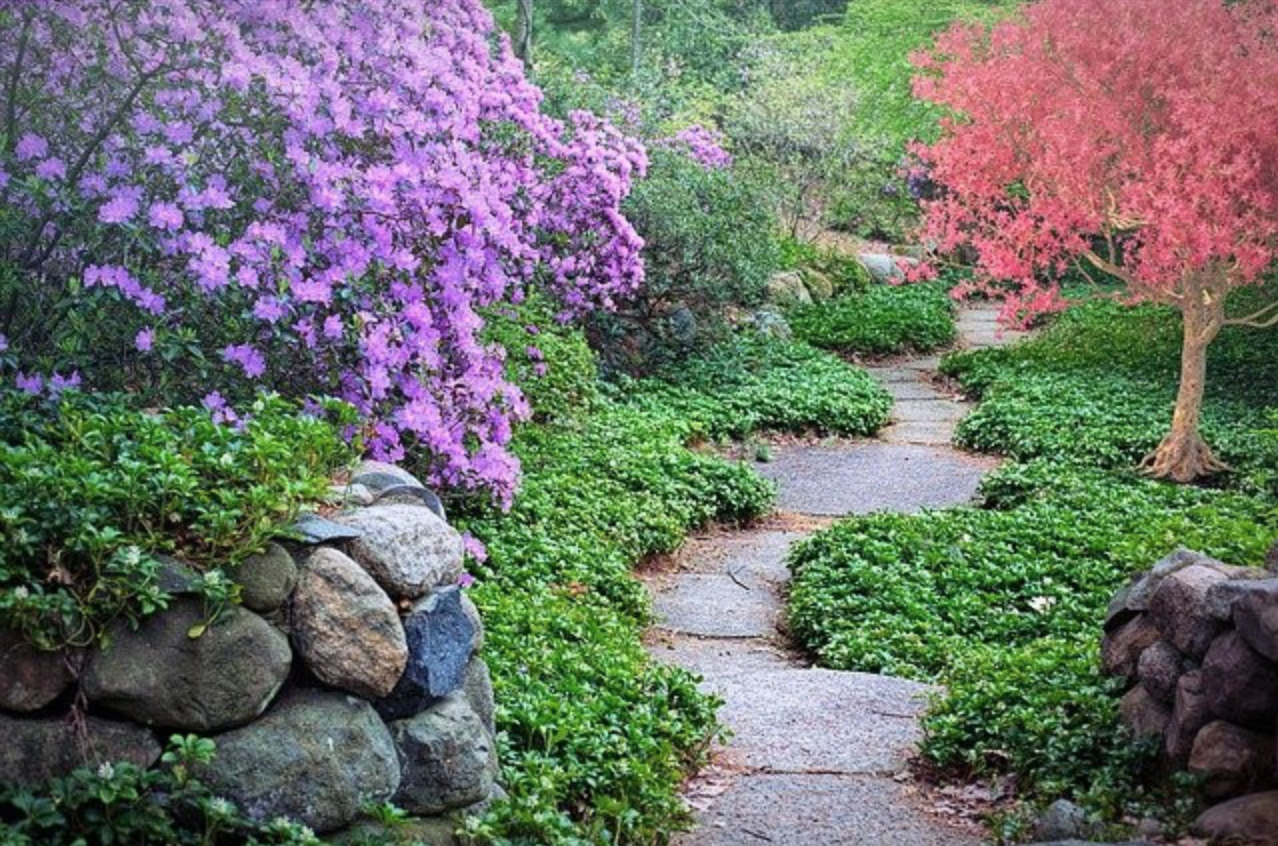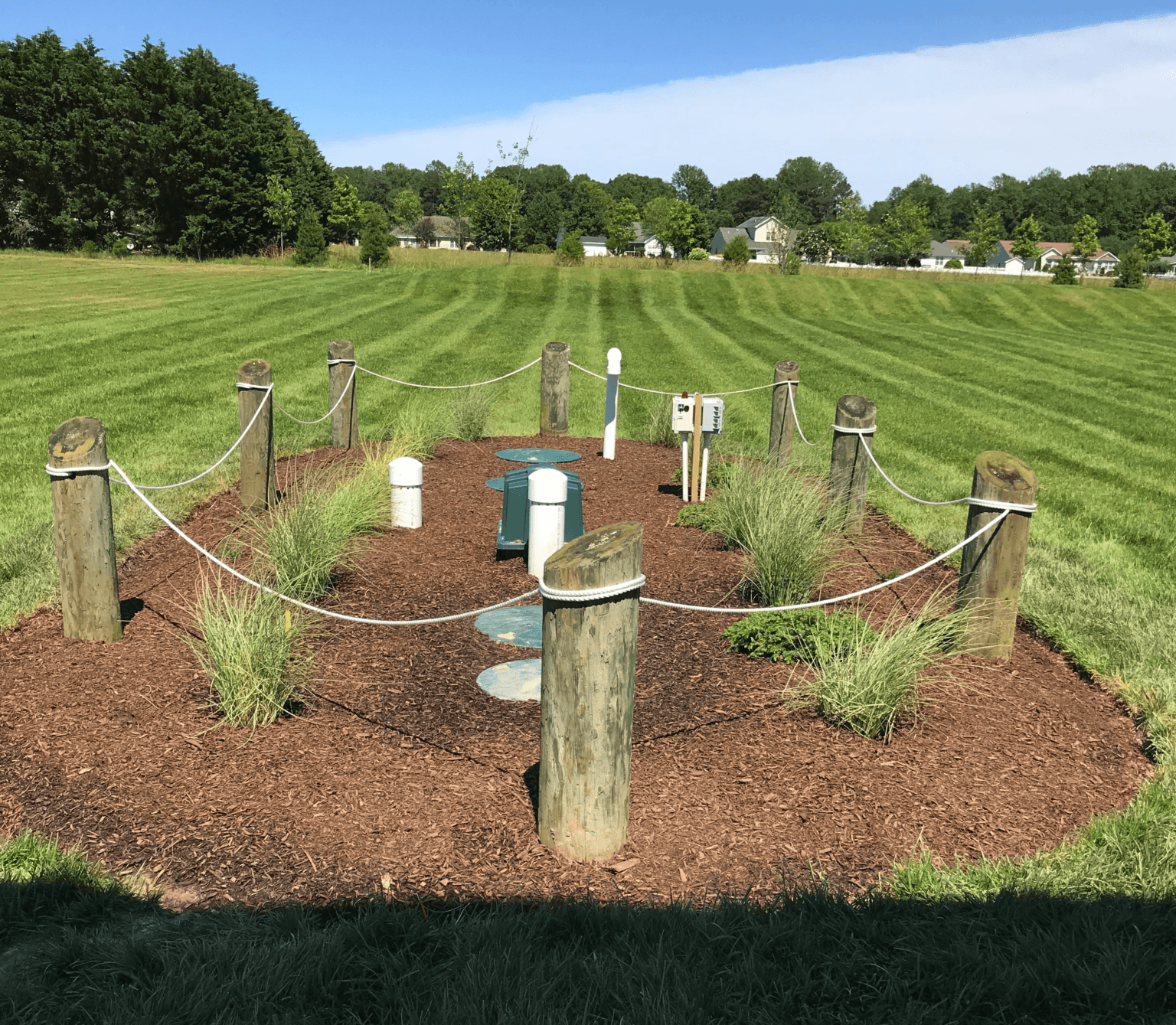A garden path can be a lovely and useful addition to your landscaping. We are thinking of adding one to our new house in Lewes, Delaware. As usual, I wanted to research these topics before we decide to get our hands dirty. I came out with the following list of 10 things to consider before building a garden path.
1. The Size
The optimal size of the path depends on both the size of the garden and the intended use of the path. Obviously, a boldly wide path will look out of place in a small, dainty, manicured garden. Conversely, a tropical jungle-esque garden actually needs that kind of boldness.
You’ll also need to consider who is going to be using the path and for what. Two specific scenarios will require you to make sure that there’s room for two people on the path:
- You are a parent who needs to hold a toddler’s hand
- You are a die-hard romantic looking forward to strolling hand-in-hand down the garden path
Also, if you plan to do some serious work in the garden and that work involves mowers or tractors, be sure that the path can accommodate that.
2. The Purpose
As mentioned above, the size of the garden is important, but it is not the only thing that matters. You’ll need to make sure that the size of your path is well matched to its purpose.
If anyone who will be using the path has mobility issues, you should be sure that the path is as level and straight as possible. The same goes if you’ll be needing to push wheelbarrows or mowers down the path.
Also, you may want to consider including handrails or even benches along the way. This is especially important if you expect very young, elderly, or otherwise mobility-challenged people to be using your path.
3. Your Home’s Aesthetic
While the size and the purpose of the path are critical, you’ll also want to try to match your home’s aesthetic and mood. This can include factors such as the architecture of your house, the exterior colors and materials, and the general intangible “feel.”
In other words, the ideal path brings your home and garden together figuratively as well as literally.
4. Your Materials

When it comes to materials, you have plenty of choices available. Do you want bricks, pavers, concrete, mulch, gravel, or something completely different? Do you want it to look elegantly uniform or would you prefer a more eclectic appearance?
Bricks or carefully laid stones are probably best if you need your path to be mostly level. Properly maintained gravel can also work, but it is not the easiest to maintain a safe, level path.
Bricks, pavers, and mulch will all, to some extent, let you choose what color you want your path to be. You can’t pick any color in the rainbow, but you do have some options other than the gray of gravel or the dark color of a dirt path.
Climate is a consideration here too. Areas of the country that tend to be cold and icy require careful planning. A path made of gravel, mulch, or another type of material does not tend to freeze over and be dangerously slippery.
If you live in an area where it is very hot in the summertime, you may be more comfortable if you choose a material that reflects rather than absorbs sunlight; otherwise, your path may retain more heat than you might prefer.
5. Connections to Your Home
Where do you want your path to start? Do you want it to lead straight from the back door into the garden? If you do, you’ll need to think about how you want to transition from door or deck into the path, and you may want to include some features that connect the path to the house in a visual sense.
You can do this by matching at least some of the materials used for the path to the exterior of the house, or you can refinish your back door or steps to match the path.
6. Your Landscaping
We’ve discussed how your garden path should ideally match both your house and your garden, but you also need to consider your landscaping in practical terms as well as aesthetic ones. For instance, if you are planning a path with pavers or stepping stones, you may also want to include some ground cover to grow up and between the stones.
This not only softens the look and makes the path appear to be an integral part of the garden, but it also helps anchor the stones more securely.
You can also use plants as edging along the path’s borders, and you can add carefully chosen flowers, shrubs, or small trees to highlight features along your path. Landscaping and hardscaping can work together to create a unified, harmonious appearance.
7. Everyone’s Safety
We’ve addressed some aspects of safety in some of the above sections, but to reiterate: making sure that your garden path is as safe as possible for everyone who will be using it has to be a priority. This means choosing materials that can be traversed easily.
Adults with no mobility issues can handle uneven surfaces such as pavers or stepping stones, but these can be a challenge for people who get around on wheels (wheelchairs or strollers), kids whose feet are faster than their eyes, or anyone else who may be unsteady.
It also means choosing materials that you are willing and able to maintain properly so that they are safe for everyone, and that are appropriate for the weather conditions where you live. Remember that a path needs to be functional as well as decorative, and plan your path accordingly.
8. The Tools You Need
If you’re going to be laying your path yourself, consider what materials will require an investment in additional tools.
Depending on how you want your path to be installed, you may need to cut sod, haul materials, dig out spaces for stones, level the ground, level the path, install borders or edges, and/or plant ground cover or lay down grass seed.
9. The Use of Landscape Fabric
Most landscapers and hardscapers install landscape fabric when they are laying paths, but there are some arguments against this practice. Landscape fabric is designed to keep weeds from growing up into the path, and it does this by creating a physical barrier.
Unfortunately, unless you’re extremely conscientious about maintaining your path, seeds can get trapped between the path and the fabric, which means that if those seeds sprout, they send roots through the fabric and this makes them very difficult to remove. Also, the landscape fabric tends to poke through cracks in the path and many people consider this unsightly.
It’s more time-consuming and tedious, but digging a deeper trench for the path and laying down a couple of inches of finely crushed stone (paver base) can prevent weeds as well without the drawbacks of landscape fabric.
10. Professional Assistance
We’ve laid out some of the things you need to consider when you’re laying down a path. The last thing to consider is – do you really want to do this all yourself? Maybe you do, and that’s great! But if you don’t, there are plenty of landscaping and hardscaping professionals ready to lend their skills and expertise to your garden path.
Walkways Ideas
Now that we have gone over what you should consider, it’s time to show some designs you may want to replicate.
The video below from House & Garden goes over 30 walkway ideas to inspire you.
Related Posts:




